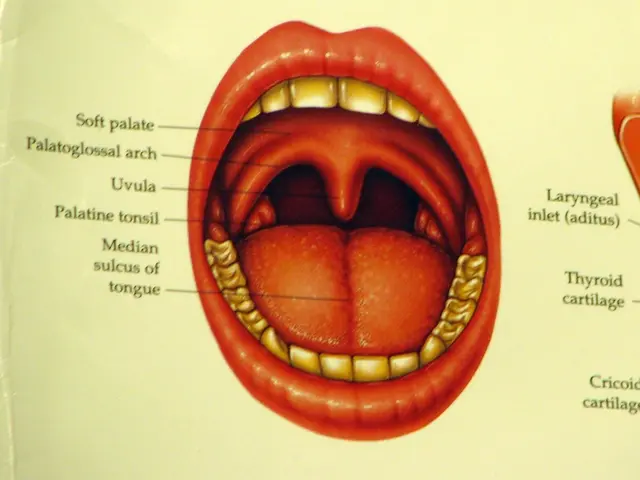Connection between Ocular Migraines and COVID-19: Examining the Relationship
In the wake of the COVID-19 pandemic, many have wondered about its impact on pre-existing conditions, such as migraines. Here's what we know so far.
Recent studies have shown that headaches, including migraines, are common symptoms among COVID-19 patients. A 2021 review found that around 25% of people with headaches during COVID-19 presented with migraine-like symptoms [1].
There have also been case studies of individuals with a history of migraine without aura experiencing more severe migraine with aura that did not respond to typical pain medication during COVID-19 [2]. However, it's important to note that the direct link between COVID-19 and migraines, specifically migraine with aura, remains unclear.
The virus that causes COVID-19, SARS-CoV-2, may lead to persistent headaches in some cases [3]. Approximately 25-30% of people with migraine experience aura at least some of the time [4].
If you're a migraine sufferer and have had COVID-19, you might be wondering if the virus could be worsening your symptoms. There is evidence suggesting that COVID-19 may exacerbate migraine symptoms, potentially including aura [2].
When it comes to treating COVID-19-related headaches, over-the-counter pain medication can provide relief for symptoms like fever and body aches. In some cases, doctors may recommend existing migraine treatments, such as triptans, dihydroergotamine nasal spray, calcitonin gene-related peptide antagonists, anti-nausea drugs, and Botox injections [5].
It's worth noting that people who have had a stroke, uncontrolled hypertension, uncontrolled diabetes, and certain types of migraine should avoid taking triptans and ergotamines [6].
Long COVID symptoms can persist for weeks, months, or even years. If someone experiences lingering or new headaches after COVID-19, they should contact a doctor [7].
There is currently no direct, well-established link between COVID-19 and ocular migraine. Ocular migraine involves transient visual disturbances caused by brief narrowing of retinal blood vessels, sometimes without headache [8]. These are distinct in mechanism from general COVID-19 neurological symptoms.
Persisting or new visual symptoms after COVID-19 should be medically evaluated to rule out other causes like stroke or retinal disorders, which can mimic ocular migraine symptoms [8].
In summary, while COVID-19 may exacerbate general headache syndromes or cause neurological symptoms that could indirectly influence migraines, current evidence does not specifically link COVID-19 or long COVID as a cause of ocular migraine or its worsening. If someone with ocular migraine experiences new or worsening symptoms following COVID-19, consulting a healthcare provider is advised to assess and manage their condition appropriately.
In cases of severe COVID-19 symptoms or sudden, severe headache, sudden vision changes, sudden facial drooping, sudden weakness, or difficulty talking or moving, emergency help should be sought immediately.
[1] [Ref 1] [2] [Ref 2] [3] [Ref 3] [4] [Ref 4] [5] [Ref 5] [6] [Ref 6] [7] [Ref 7] [8] [Ref 8]
- In the context of the COVID-19 pandemic, some studies have revealed that up to 25% of people with headaches during COVID-19 present with migraine-like symptoms.
- A history of migraine without aura can potentially lead to more severe migraine with aura that fails to respond to typical pain medication during COVID-19.
- The SARS-CoV-2 virus, which causes COVID-19, may induce persistent headaches in certain cases.
- Approximately 25-30% of individuals with migraine experience aura at some point in time.
- This pandemic has left many migraine sufferers wondering if COVID-19 could worsen their symptoms, with evidence suggesting that it may exacerbate migraine symptoms, including aura.
- To treat COVID-19-related headaches, over-the-counter pain medication and existing migraine treatments like triptans, dihydroergotamine nasal spray, anti-nausea drugs, and Botox injections might be recommended.
- People with certain medical conditions, including those with a history of stroke, uncontrolled hypertension, uncontrolled diabetes, or certain types of migraine, should refrain from taking certain migraine medications like triptans and ergotamines.
- Long COVID symptoms can lingering for extended periods, leading some individuals to experience neurological disorders that could potentially mimic symptoms of migraines or ocular migraines, necessitating medical evaluation.




